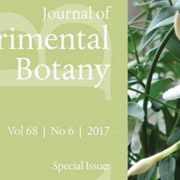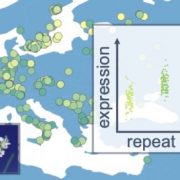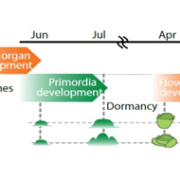Translational coincidence in Arabidopsis (Mol Syst Biol)
 Changes in photoperiod affect metabolism and development, as well as flowering time, hypocotyl elongation, freezing tolerance, stomatal opening, C-allocation and growth. Seaton and collaborators measured the Arabidopsis proteome under four photoperiods: 6h, 8h, 12h and 18 hours. At longer photoperiods, enzymes involved in primary and secondary metabolism and photosynthesis were more abundant, consistent with the higher metabolic activity in long days. The protein abundance was observed to be affected by both clock-regulated transcription and light-regulated translation rates. A mathematical model describes this “translational coincidence”; it explains the differences in protein synthesis rates across photoperiods depending on the genes’ circadian regulation. For instance, an evening-phased transcript would have high transcript levels coinciding with light-mediated high translation rates only under long photoperiods. A similar mechanism was observed by analyzing data from other phototrophs. As the authors conclude, “Translational coincidence can explain how plants adjust their proteome to prevailing photoperiods, optimising their metabolism and growth.” (Summary by Cecilia Vasquez-Robinet) Mol. Syst. Biol. 10.15252/msb.20177962
Changes in photoperiod affect metabolism and development, as well as flowering time, hypocotyl elongation, freezing tolerance, stomatal opening, C-allocation and growth. Seaton and collaborators measured the Arabidopsis proteome under four photoperiods: 6h, 8h, 12h and 18 hours. At longer photoperiods, enzymes involved in primary and secondary metabolism and photosynthesis were more abundant, consistent with the higher metabolic activity in long days. The protein abundance was observed to be affected by both clock-regulated transcription and light-regulated translation rates. A mathematical model describes this “translational coincidence”; it explains the differences in protein synthesis rates across photoperiods depending on the genes’ circadian regulation. For instance, an evening-phased transcript would have high transcript levels coinciding with light-mediated high translation rates only under long photoperiods. A similar mechanism was observed by analyzing data from other phototrophs. As the authors conclude, “Translational coincidence can explain how plants adjust their proteome to prevailing photoperiods, optimising their metabolism and growth.” (Summary by Cecilia Vasquez-Robinet) Mol. Syst. Biol. 10.15252/msb.20177962








